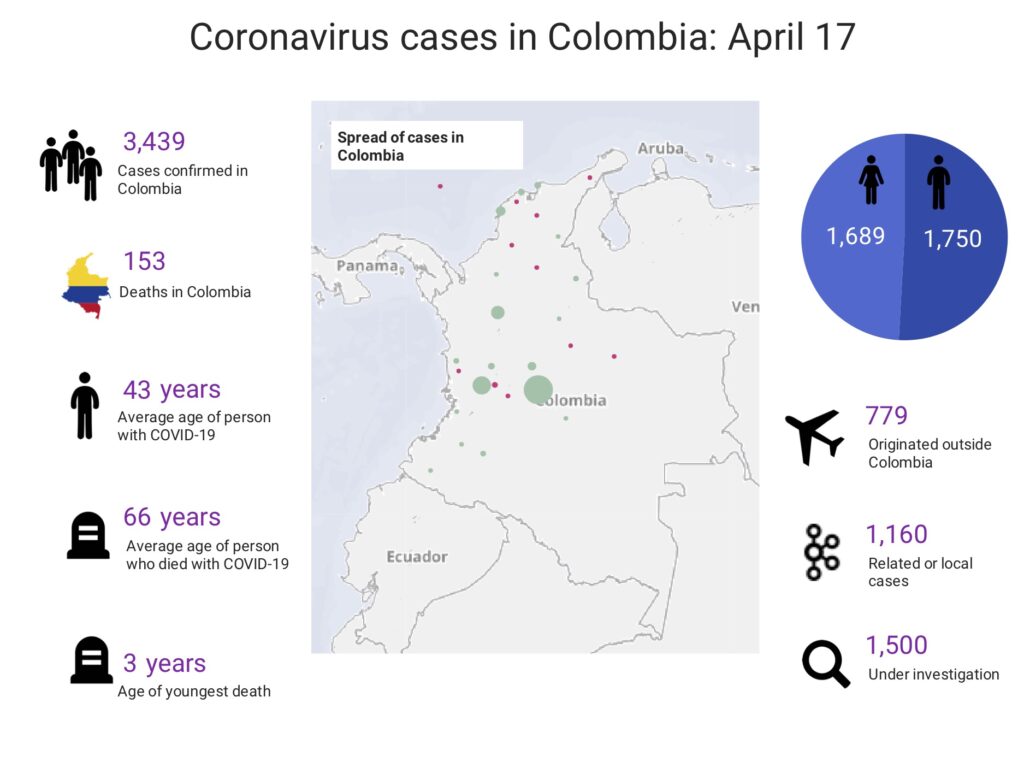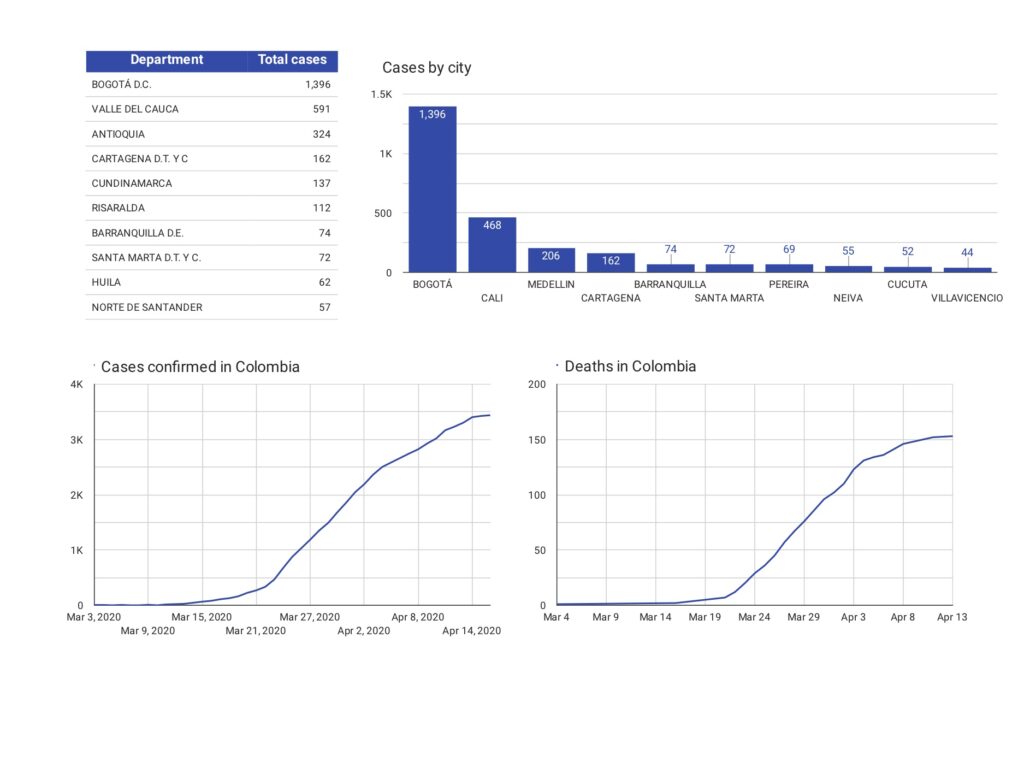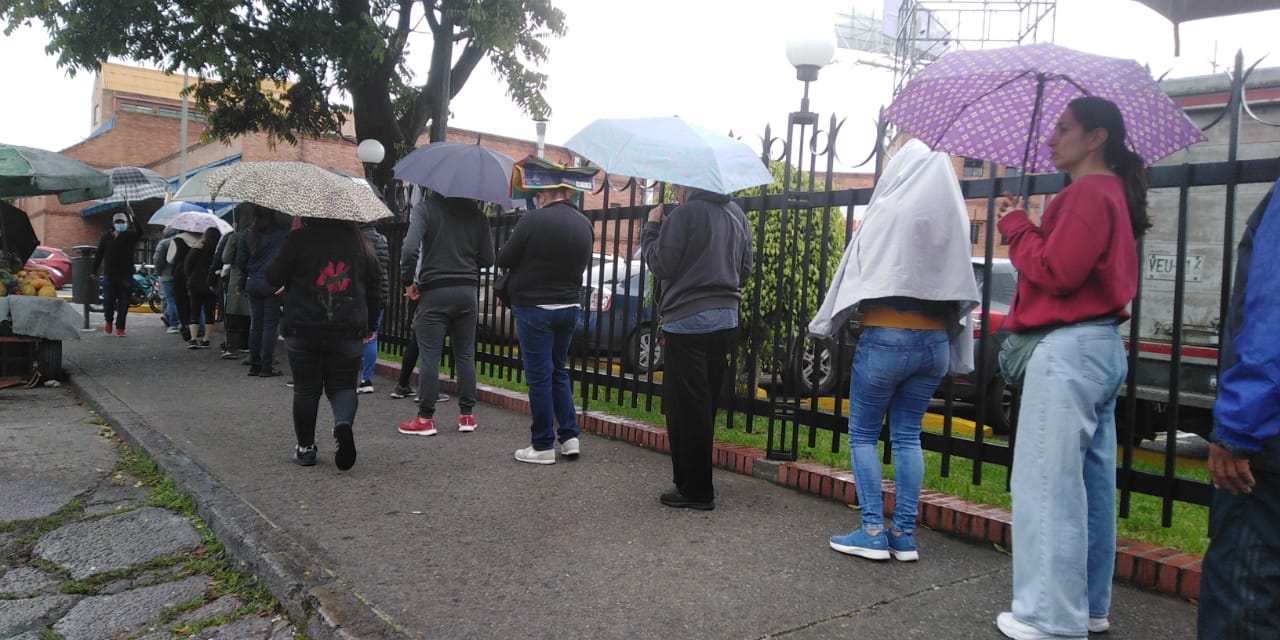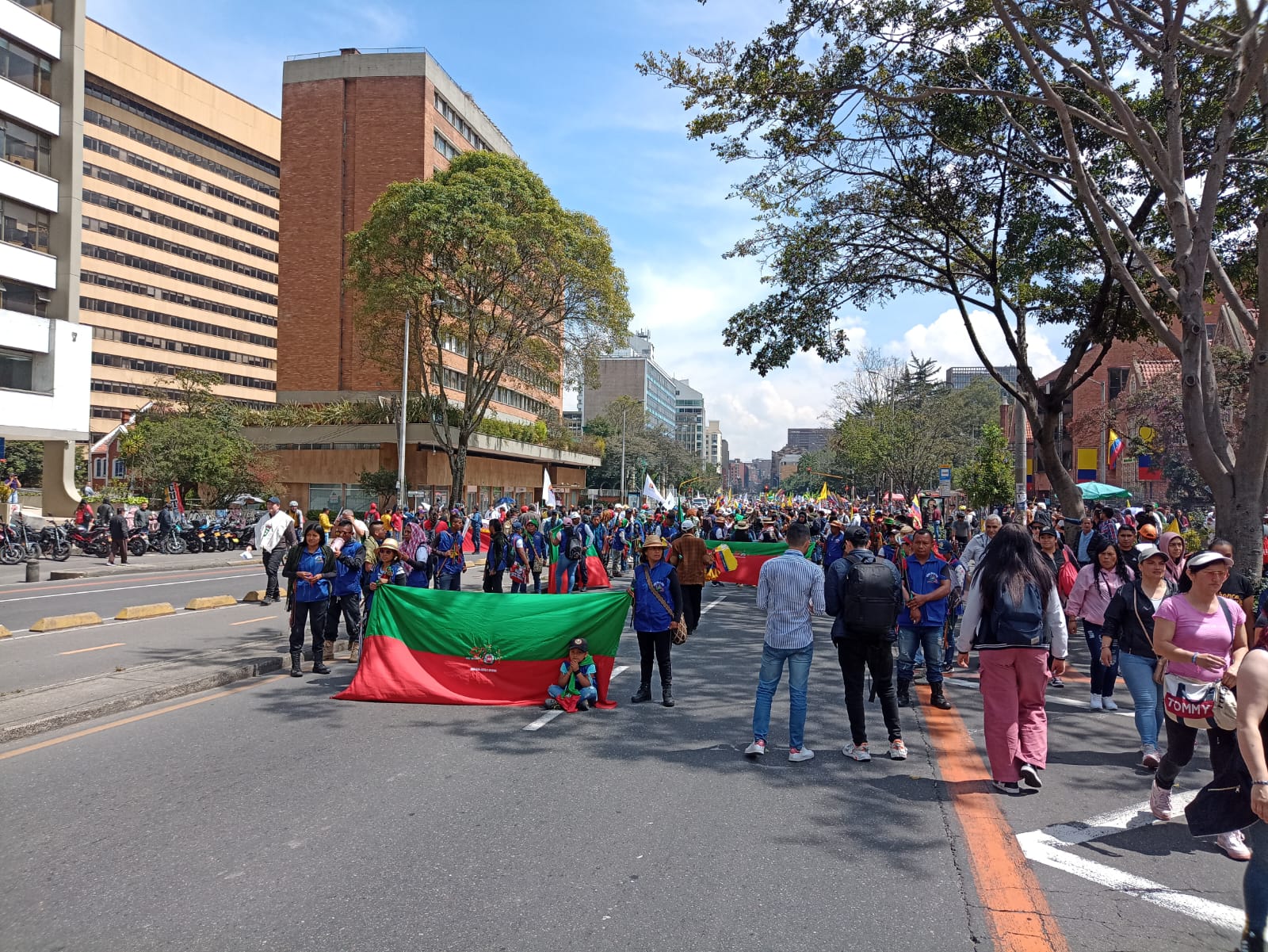Our regular roundup of COVID-19 cases in Colombia.
Key points on coronavirus in Colombia:
- 153 deaths and 3,439 cases across 29 departments
- Talk of intelligent isolation continues
- Protests in Ciudad Bolívar

We are now 42 since the first case (March 6) and latest stats show:
- 603 COVID-19 patients recovered (average age 40 years)
- 450 patients are sick but still at home (average age 55 years)
- 153 persons confirmed to have the virus have died (average age 66)
There are 450 hospitalised cases, of which 112 are high-risk patients in ‘UCI’ intensive care units.
There’s been a lot of questions around the world on the topic of testing – and Colombia is no different. On Sunday and Monday, the number of confirmed cases seemed to have flattened off, but it turned out the number of tests had also shrunk significantly. As discussed in previous updates, there have been issues with faulty testing, and testing bias – only testing those who fit certain criteria. All of which means that, just like many other countries in the world, Colombia does not have a clear idea of how many people are actually infected.
Taking a closer look at the numbers, while Bogotá continues to have significantly more cases than other areas, it is Santa Marta that has the most deaths per million people (11.5), followed by Cartagena at 9.8. With its smaller population and high footfall, Cartagena also has more cases per million inhabitants than Bogotá.

Is there such a thing as intelligent isolation?
With the quarantine now due to end on April 27, people are wondering what is going to happen next. Intelligent isolation? Smart quarantine? The accordion model?
Colombia’s health minister, Fernando Ruiz Gómez, said yesterday that “society can’t be kept permanently closed.” Explaining that ending the quarantine at the end of the month is also not an option, the minister spoke of “a systematic, gradual and controlled opening of some sectors of the economy.” And if cases start to get out of control, he says we’ll be back to a lockdown.
Of course, that takes us back to the thorny question of testing. Which is probably why the health ministry is insisting that new rapid tests will be available on the EPS systems. EPS providers have come under fire for failing to transfer much needed cash to hospitals as well as not testing enough people.
What’s rapid testing?
Given the massive number of variables – from how the data is reported to what information is released and whether pending tests and negative results are counted – it’s difficult to compare testing between countries. However, Our World in Data is attempting to do just that. While Colombia was quick to enforce isolation measures, the graph below shows it has not been as quick in implementing testing.
There are two types of tests. A “serological” test that basically involves taking blood and testing it for COVID-19 antibodies and a “molecular” test, which involves a swab of your nose or throat.
The molecular tests take more time and need to be processed in a lab, which is one of the challenges in a country as geographically spread as Colombia. Less reliable are the blood tests, partly because it takes time for people to develop the antibodies they test for. But the health minister says you can get results in less than 20 minutes, making them a quick-fire way to test a lot more people.
The idea is to keep using the molecular tests for high-risk groups, such as medical workers or those over 70. Then these new rapid tests can be used for the rest of the population.
The INS say there are now 22 labs ready for testing across the country. Nine of these are in Bogotá, and others are in places like Huila, Arauca, Santander, Valle de Cauca, Meta and Antioquia.
Economic hardship
Whatever form it takes, an end to the quarantine can’t come quickly enough for the country’s worst off. As the Norwegian Council for Refugees put it, “Coronavirus is affecting everybody, but we’ve seen increasingly devastating effects on displaced populations in particular.” Venezuelan migrants, homeless people and informal workers are all suffering, as are the millions who normally survive week to week.
Related: How to help vulnerable Bogotanos during the coronavirus in Colombia
There have been cacerolazos in the capital for the past two nights as people in Ciudad Bolívar and other parts of the city demand more support from the authorities. Both nights have resulted in violent clashes with the police (including ESMAD) in Ciudad Bolívar, but they show no signs of stopping.
Neighbourhood leader Christian Robayo Arias called on authorities to review the way citizen protests are handled and posted a video of two women accusing the police of shooting a man and putting him in hospital.





